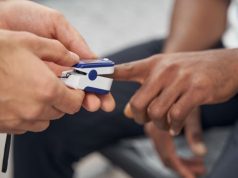Performance similar to the standard atherosclerotic cardiovascular disease risk score
By Lori Solomon HealthDay Reporter
FRIDAY, Dec. 2, 2022 (HealthDay News) — Deep learning can estimate cardiovascular risk from a routine chest X-ray image similar to the current clinical standard, according to a study presented at the annual meeting of the Radiological Society of North America, held from Nov. 27 to Dec. 1 in Chicago.
Jakob Weiss, M.D., from Brigham and Womenâs Hospital in Boston, and colleagues developed a deep learning model (CXR-CVD risk) to estimate 10-year cardiovascular risk from a routine chest radiograph. Validation occurred in an independent cohort of 11,430 outpatients potentially eligible for primary prevention (low-density lipoprotein cholesterol 70 to 190 mg/dL, no prevalent diabetes, and no prior major adverse cardiovascular events [MACE]).
The researchers report that in the validation cohort, 1,096 MACE occurred during a median follow-up of 10.3 years (9.6 percent of the cohort). In statin-eligible patients, there was a significant association between CXR-CVD risk and MACE (hazard ratio, 2.03), which remained significant when adjusting for cardiovascular risk factors (adjusted hazard ratio, 1.63). CXR-CVD risk performed similarly to the atherosclerotic cardiovascular disease (ASCVD) risk score (c-statistic, 0.64 versus 0.65) and was additive to the ASCVD risk score (adjusted hazard ratio, 1.58).
“Based on a single existing chest X-ray image, our deep learning model predicts future major adverse cardiovascular events with similar performance and incremental value to the established clinical standard,” Weiss said in a statement. “What we’ve shown is a chest X-ray is more than a chest X-ray. With an approach like this, we get a quantitative measure, which allows us to provide both diagnostic and prognostic information that helps the clinician and the patient.”
Copyright © 2022 HealthDay. All rights reserved.








